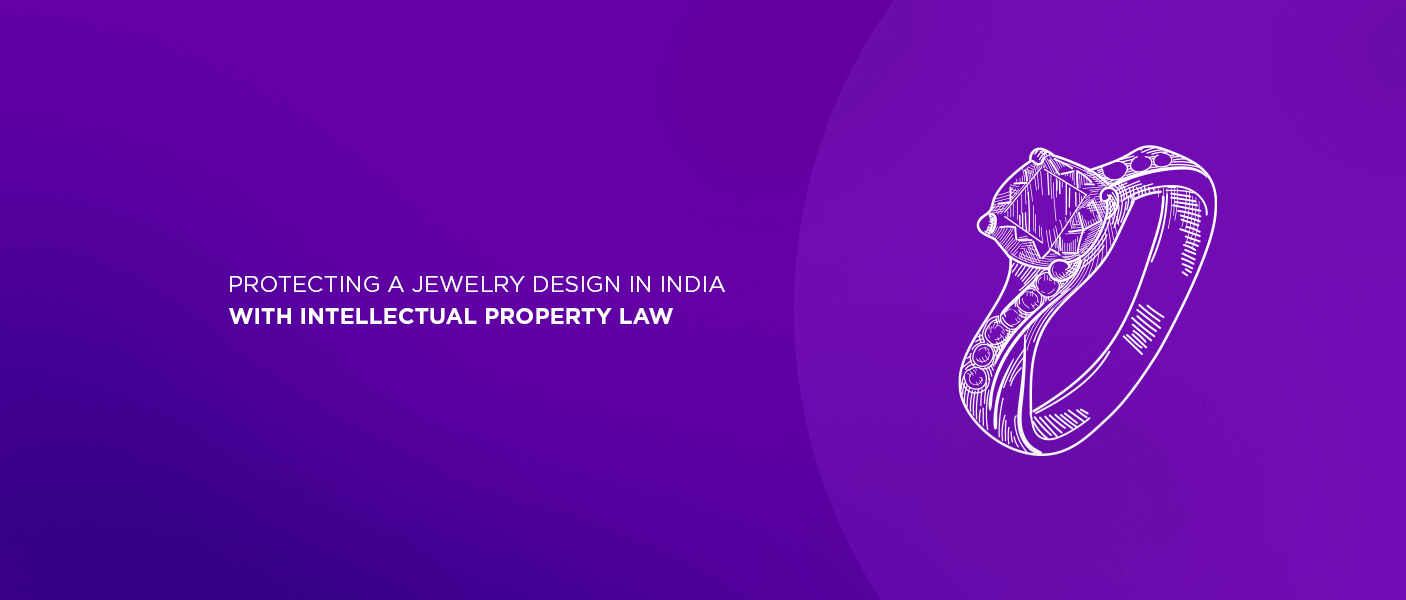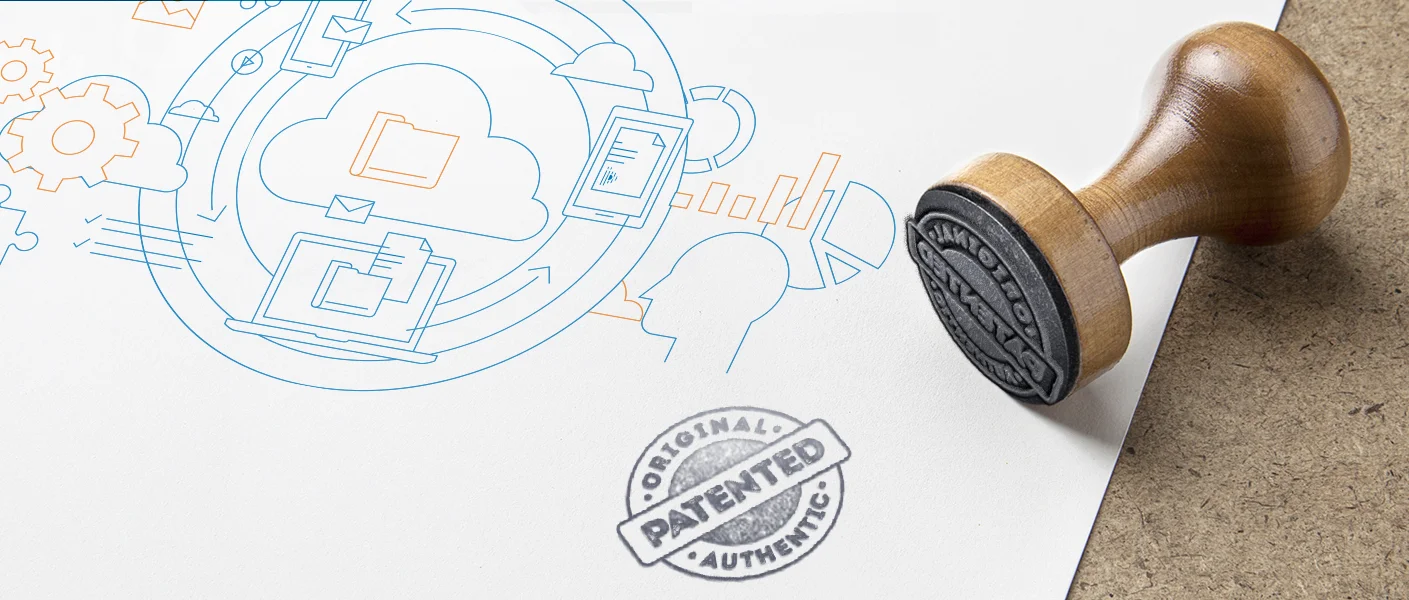Protecting a Jewelry Design in India With Intellectual Property Law
March 22, 2023 By Shruti NairWe are familiar with the importance of copyrighting music, art, drama, or literary work, but did you know design is also a significant piece of work that needs to be protected? Now by design yet again the first things that come to our mind are cloth, machinery, or any such product but there is also one design that must be protected and which is often ignored i.e. Jewelry Design.
The Jewelry Market
Earlier, only women and kids were associated with jewelry, but today times have changed and men, too, are becoming the mainstream buyers of jewelry. In fact, there is a separate section for men, both online and offline shops due to the growing demand.
Jewelry of various forms and figures designed using the latest technology and tools has pulled the attention of both genders, leading to an explosion in the global sales of jewelry, which was valued at USD 340.69 billion in 2022 and is expected to expand at a compound annual growth rate (CAGR) of 4.6% from 2023 to 2030. Thus, jewelry is today considered to be the most sought-after fashion accessory and which is why the jewelry business is booming. Not just offline, to meet customers' demands and fulfill their preferences, jewelry brands are now competing online as well.
Now, with such growing demands and in the race to cater to the heavy flow of customers, there also arises the trouble of ‘Copycat Designs’ or ‘Knock offs.’ The exact replica of jewelry is sold for cheap under the brand name which although has a lot of buyers for it but is a huge loss for not only the jewelry shop owner but majorly to the designer of it because a design is a creative work and an intellectual property which must be protected.
Jewelry Design and the Rising Threat of Imitation
It is a known fact that imitations of jewelry are easily available and such jewelry is a part and parcel of daily life. Artificial jewelry is a whole different business and people sell and buy them on a daily basis, but, copying a jewelry design illegally is completely a different story and is not at all acceptable.
With jewelry brands showcasing their exquisite collections online and with the latest 3D printing technologies, and many other tricks, copying a design has become easy and fraudsters have become highly advanced in doing so too. Since it is impossible to catch them or stop them from doing so, there is only one way to prevent such sharks from eating away your profit, and that is by protecting a jewelry design via a combination of Design, Copyright, and Trademark Law. So, let’s see what steps you must take to protect your precious jewelry design from being sold for cheap under your nose.
Laws to Protect a Jewelry Design in India
Due to the rising number of knockoff jewelry pieces or ‘copies’ of jewelry designs presently and easily available in the market, the need for protecting jewelry designs is escalating. In fact, various jewelry designers have obtained IP protection (Intellectual Property that refers to the intangible type of property which is a creation of human imagination, mind, or ideas for example inventions, paintings, etc.) for their jewelry pieces that range from trademark protection of the brand value to protection of the design itself either through copyright.
Such IP protection ensures that neither your competitors, other designers, or producers of knock-off jewelry or imitation jewelry can copy your design or harm your reputation by selling your valuable design for cheap. So what to do for gaining IP protection for your jewelry design?
Well, first of all, it may seem easier to get IP protection thinking that the design of jewelry is an artistic work and hence can be claimed for protection under the Copyright Act and the jewelry pattern under the Designs Act, but when we talk about proper legal methods, then it is quite a tough job as both overlaps when it comes to protecting a jewelry design in India.
Jewelry Protection Under Designs Act
The Design Act, of 2000 defines the word “design” under Section 2 (d) as various features of a two-dimensional as well as three-dimensional shape, configuration, pattern, ornament, or composition of lines or colors applied to any article that has been created by any industrial process or means, whether manual, mechanical or chemical, separate or combined, which in the finished article appeal to and are judged solely by the eye’ and excludes ‘any mode or principle of construction or anything which is in substance a mere mechanical device’.
The only prerequisites for protecting jewelry designs as intellectual property under Designs Act are:
- Any person claiming the protection of a jewelry design will be considered as the proprietor/owner of a new or original design applied for registration.
- The design should be fresh, new, and original and should not have been disclosed to the public in India or globally.
- The design should be ornamental; i.e., it should not contain any feature that is functional.
- It should be different and distinguishable from known designs (primarily those already registered with the Designs Office).
- Should not contain scandalous or obscene material, and its features must be easily visible to the naked eye.
- Designers should decide to apply for design protection if they anticipate that their design will have commercial success in the market.
The registration process for jewelry design under the Design Act is simple and straightforward. All you have to do is submit an application by clearly mentioning the class of goods (i.e.,11-01 for jewelry) along with photographs of jewelry designs to the controller of designs at the Designs Office. The controller will then evaluate the application on the basis of the requirements mentioned above, and if there are no objections, the design will be registered and published in the design journal.
In case of problems/objections, a report will be raised by the examiner, and a hearing may be appointed. The entire registration process for most cases takes between 6 to 10 months and the applicant is granted 10 years of protection from the date of application, which can be extended an additional 5 years.
Jewelry Protection Under Copyrights Act
Under section 2 (c) of the Copyright Act, 1957 (“Copyright Act”) of India, “artistic work” is defined as any original and creative work such as a drawing, painting, sculpture, engraving, or photograph, regardless of whether it possesses any artistic quality, which includes a diagram, map, chart or plan, work of architecture, or any other works of artistic craftsmanship such as literary or drama, music, sound recording, cinematograph films, computer-generated work. Therefore, one can claim protection for sketches of jewelry designs under the Copyright Act.
Upon claiming copyright, as per Section 14 of the Copyright Act, the owner of the jewelry gets the right to:
- communicate the sketches of the jewelry to the public.
- issue copies of the sketches to the public, not copies already in circulation.
- include jewelry in any cinematography film.
- reproduce the sketch of jewelry in any material form, i.e., storing the sketch in electronic form and depicting the design/sketch of jewelry in 2-dimensional or 3-dimensional form.
Copyright registration is not mandatory, but registering a Design is necessary if you want to enforce it. Upon registration, the applicant can use the “©” symbol, which denotes that the work has been copyrighted. Copyright for jewelry will subsist only when the sketch is completed and given a material form. The Copyright Act merely raises a prima facie presumption in respect of the particulars related to jewelry entered in the register of copyright.
For registration, the applicant has to apply, either physically or electronically in the copyright office. The owner of jewelry may also apply for registration to the registrar of copyrights in Form XIV, accompanied by the prescribed fee.
Upon reviewing the application, the registrar of copyrights will decide whether to grant registration for a jewelry sketch if no objections are received within thirty days of receiving it; if he is satisfied with the accuracy of the details provided in the application, he will enter them into the Register of copyrights. If any objection is raised in the time as mentioned earlier, or if he is not satisfied with the correctness of the particulars given in the application then he may enter such particulars for jewelry in the register as he considers proper, after holding such inquiry as he deems fit. If all is good, then the applicant will be issued the extracts of the Register of Copyrights (ROC). The duration of copyright protection is the designer's lifetime plus 60 years.
Copyright vs Design: The Overlap
Both laws cover jewelry designs when it comes to protection; the Copyright Act covers sketches, whereas the Design Act covers actual designs and patterns. However, in order to prevent any misuse, Section 15(1) of the Copyright Act, 1957 states that any design registered under the Designs Act, 2000, is exempted from protection under the Copyright Act. Further, it is also mentioned that copyright protection will stop if the product with the copyrighted design is created more than 50 times. After 50 units have been produced, copyright protection will cease to operate.
Jewelry Protection Under Trademark Act
Since jewelry designs are not unique words/ symbols but works of art, they do not fall within the ambit of Trademark as Trademarks are unique words, names, symbols, configurations, devices, shapes of goods, packaging, a combination of colors, or any combination thereof, known as a mark that legally distinguishes the goods or services offered by an entity from those provided by any other entity of its kind.
But, you can protect your jewelry business as a whole by registering any of the marks under the Trademark Act, of 1999. If not a jewelry design, you can protect your jewelry packaging design as well under a trade dress which denotes packaging design. All you have to do is, while going through the process of your jewelry trademark registration, select the right jewelry trademark class, submit the application along with necessary documents and graphical representation of trademarks, and as soon as you get approval, you get the rights to protect your jewelry business from any other jewelry designers who wish to benefit from the reputation attached to the packaging of your jewelry.
In a Nutshell,
Jewelry design can be and must be protected because, after all, it is a creative work that was born after putting dedicated efforts and unique ideas into it, and no one should be allowed to just misuse it anyway.
Although there is no straightforward or one simple act or law to protect a jewelry design, our Indian constitution indeed has a great combination of various acts under the Intellectual Property Law, with the help of which a jewelry design can be safeguarded from being exploited.
We understand all these acts, laws, and registration may seem like a daunting process, and you may feel unnecessary thinking about who is going to copy your design when the big brands are available in the market. But, it is something you must do even if you are a startup or a small jewelry brand owner because it will give you the right to protect what is yours and take action against fraudsters to teach them a lesson as well.
Don’t want to go through the tiring process of searching, gathering documents, filling and filing applications, or any further legal process? Approach the best IPR firm in town - Parker and Parker Co. LLP and sit back and relax. Our experts will handle everything and you will simply receive all the rights in no time.





